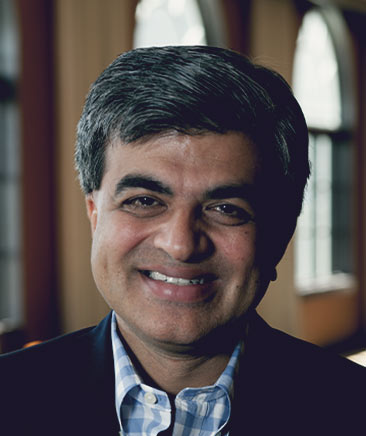As the pandemic recedes, it leaves in its wake a set of even more pernicious healthcare challenges. After talking daily to life sciences executives and facilitating a session at the World Economic Forum’s annual meeting in Davos, we’ve come to believe that, compared with “solving” COVID-19, getting and keeping the world healthy—while avoiding a “healthcare doom loop”—will prove the more difficult task.
4 challenges confronting global health and healthcare today
- National healthcare systems have hit the limit of what they can spend on healthcare. The Business Research Company estimates that global spending on healthcare will have totaled more than $12 trillion in 2022, as the combined effects of COVID-19 and the growing burden of chronic illness increase healthcare demand and health system strain. The GDP to support increased spending just isn’t there. Meanwhile, there’s a growing realization that increased investment in public health hasn’t translated into longer, let alone healthier, lives for most people.
- Frontline healthcare workers are in short supply. While the shortage of healthcare workers in low- and middle-income countries is well documented, the problem has grown acute in Western Europe, the U.S. and other wealthy nations. Aging populations and pandemic burnout are mostly to blame, but the administrative burden imposed by disconnected technological infrastructure and the explosion of medical data also contribute. In the U.S., doctors are disappearing from emergency rooms and reporting record levels of burnout and depression, and nurse understaffing is becoming more deadly for patients every day. On the other side of the world, estimates peg India’s doctor shortage at around a million.
- Disparities in health outcomes—between regions as well as within wealthy countries—continue to widen. From one zip code to another within Camden County, N.J., the gap in life expectancy can be as wide as 16 years. Yes, there’s a growing consensus that health equity is a problem worth solving, with a who’s who of healthcare companies (including ZS) recently pledging to take concrete action to do so. Operationalizing this commitment, however, is another matter. Establishing the data foundation, analytical capabilities, last-mile technologies and aligned incentives among stakeholders remains a work in progress.
- We’re trapped in a cycle of treating people only once they’re sick. When we surveyed more than 9,500 healthcare consumers across the U.S., Western Europe, the U.K., China and Japan, the message was clear: People want more focus on preventive care. Moreover, research shows that traditional medical interventions account for only between 10% and 20% of health outcomes. So, not only do we spend too much on healthcare, but we make bad investments. Unfortunately, limited resources (financial and human) and misaligned incentives mean we’re lucky if we can provide basic care, let alone top-of-the-line prevention.
These challenges risk creating a “healthcare doom loop,” whereby staff shortages lead to financial constraints, which force health systems to curtail investments in health prevention, staff morale and infrastructure upgrades, leading to widening health disparities and poor patient experiences, driving healthcare consumers to delay treatment, forcing healthcare systems to employ costlier interventions on sicker patients, leading to intensifying strain on health system finances, ever-widening service cutbacks and increasing levels of provider burnout, leading to—you get the point.
So, how do we break this cycle?
Overcoming the healthcare challenges of a post-COVID world requires a commitment to these 3 principles
We have the power to prevent the dystopian healthcare future described above if stakeholders align around three priorities.
- Refocus our healthcare systems on creating value, not volume. Value-based healthcare is not new. We contributed to the World Economic Forum’s latest report from its Global Coalition for Value in Healthcare, in which we argue that value-based healthcare represents the clearest path to overcoming public health’s solvency crisis and closing the gap between what patients want from healthcare and what they receive. (In our survey, healthcare consumers were half as likely to feel “cared for” as their doctors presumed.) This means transitioning from a healthcare system where the product is treatments and therapies to one where the product is the outcomes that matter to patients.
- Increase adoption of innovative technologies, especially artificial intelligence (AI). The concept of using AI to transform healthcare is also not new, but we stand today at a crossroads: AI can solve almost any healthcare puzzle—from designing a fully personalized cancer vaccine in weeks to choosing clinical trial sites to increase participant diversity. So, what’s stopping it from revolutionizing drug R&D, care delivery, early disease detection and more? Access to usable, representative data is one obstacle, but the more significant one is adoption resistance. To overcome it, we must ensure that (1) clinicians see AI as augmenting, not replacing, what they do and (2) the public trusts the algorithms—even if they don't understand them.
- Pursue policies that align stakeholder incentives around solving these challenges. Due to fragmentation in our health systems, especially in the U.S., drastic changes to how we deliver, measure and reward healthcare all crash against a familiar barrier: mismatched stakeholder incentives. Governments must step in with policies that open the right channels for stakeholders to come together by aligning incentives in ways that wouldn’t otherwise be possible. By stepping in to certify algorithms’ safety and transparency, for instance, or mandating that health systems measure and publish a core set of metrics that measure value delivery, governments can incentivize stakeholders to make needed changes.
The stakeholders that matter recognize that healthcare is broken. At the same time, the technology to fix it exists. So, the raw ingredients are there, but what’s missing is systems-level thinking shared across the players needed to make it reality. Here’s what we recommend:
- Transcend your silos to take in the broader perspective.
- Have a lofty goal focused on population-level health.
- Let the private sector bring innovation.
- Look to the public sector to make policies that incentivize the right behaviors.
With the tight alignment between the public and private sectors, we can come together around a shared ambition that’s sufficiently powerful to alter the course of world evolution.
Add insights to your inbox
We’ll send you content you’ll want to read – and put to use.
















